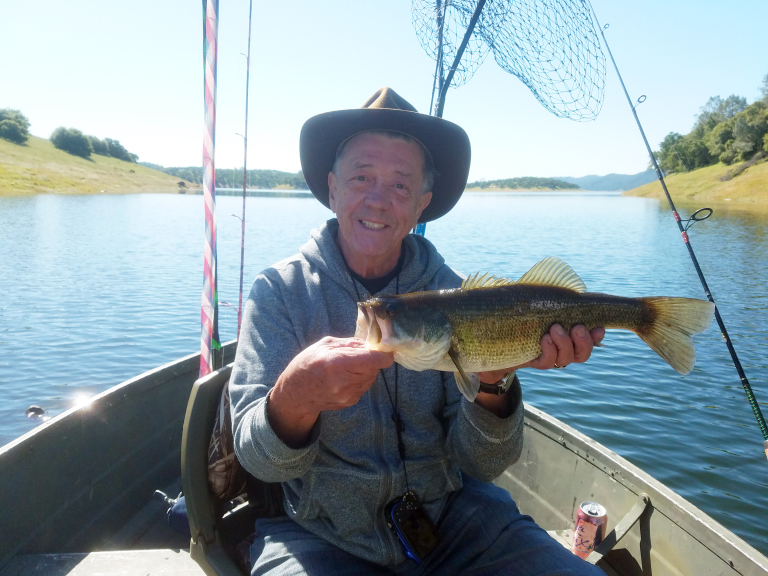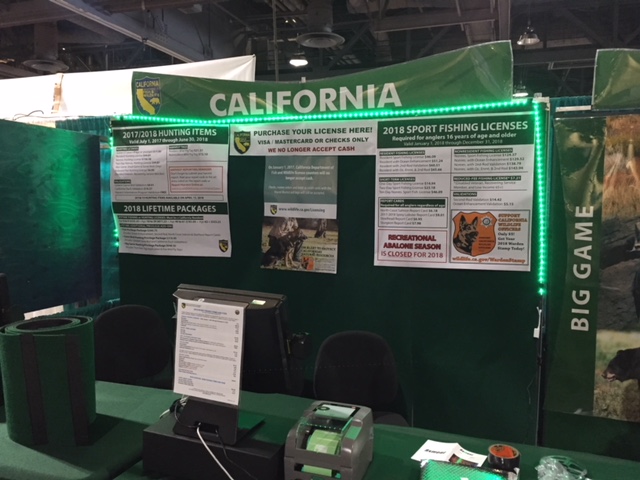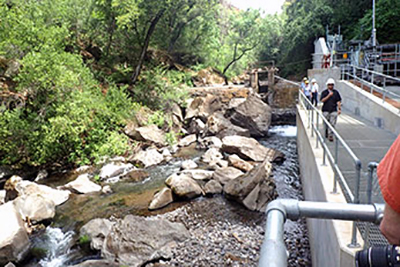Keeping Black Bass?

by Carrie Wilson
3-24-2018
Website
Question: Are you allowed to keep black bass that are of legal size? The regulations are confusing as to if you are allowed to keep them or not. (Jake)
Answer: California Code of Regulations Title 14, section 5.00 describes the black bass regulations for various bodies of water throughout California. In California, the term “black bass” is used to define four commonly caught members of the sunfish family of the same genus: smallmouth bass, largemouth bass, spotted bass and Alabama bass. A fifth member of the black bass group, the redeye bass, is rare.
Black bass are clearly the most popular of warm water fish and there are many anglers who fish in tournaments with prize money offered for the biggest total catch or individual “big fish.” All licensed black bass tournaments require catch and release fishing, so this is understandably confusing to those who may want to catch and keep black bass.
Black bass are considered very good table fare! Although there are many exceptions, the general rule for black bass is a 12-inch size limit and five fish bag limit in combination of species. It is very important to look up the body of water you plan to fish and verify the specific black bass rules that apply there.
Also please note, black bass cannot be transported live from the waters where taken. Many people try to keep them in a live well to raise them at home — that is not legal.
Hunting small game and big game at the same time
Question: Would it be legal to carry a shotgun for small game and a rifle for deer at the same time? (SJ)
Answer: Generally, carrying multiple firearms while hunting is not prohibited by the Fish and Game Code or regulations adopted to implement those laws. Such activity is common, in fact — especially with turkey hunters who are simultaneously keeping an eye out for wild pigs. Hunts that occur in certain areas with restrictions, such as wildlife areas, refuges and areas with county firearms closures, constitute an exception to this general rule. And of course, hunts which specifically prohibit shotguns and rifles, such as muzzleloader and archery-only seasons and zones, are exceptions as well. Be cautious so you don’t end up carrying lead ammunition in an area where it is prohibited.
For the authorized methods of take for various categories of game and nongame birds/mammals, please check the hunting regulations (CCR Title 14, sections 311, 353, 465, 475 and 507 (for waterfowl)).
Razor clams and domoic acid testing
Question: My friend and I are enthusiastic razor clam harvesters in Del Norte. For the last two years, however, we have been unable to take part in this popular fishery because of high domoic acid levels in the clams. We noticed that the last published domoic acid tests were from Nov. 13, 2016. We were wondering if testing of domoic acid levels has continued over the last year but has not been published on the California Department of Fish and Wildlife (CDFW) health advisory website. Does CDFW need volunteers to collect clams for testing? If so, how would we go about doing this? (Jolyon)
Answer: Razor clams are known for bioaccumulating domoic acid, which basically means they concentrate the toxin and are slow to excrete it. Unfortunately, concentrations of domoic acid continue to remain high in samples and it does not look likely the fishery will open soon.
The California Department of Public Health’s Marine Biotoxin Monitoring Program coordinates all bivalve shellfish and phytoplankton monitoring in the state for public health protection. For razor clam sampling, they work with individual volunteers, the Tolowa Dee-ni’ Nation and CDFW staff from the Eureka office.
If you are interested in volunteering for the program you can contact CDPH Senior Environmental Scientist Vanessa Zubkousky-White, who coordinates the bivalve shellfish and phytoplankton sampling effort. She can be reached at (510) 412-4635, or vanessa.zubkousky@cdph.ca.gov.
Carrie Wilson is a marine environmental scientist with the California Department of Fish and Wildlife. While she cannot personally answer everyone’s questions, she will select a few to answer each week in this column. Please contact her at CalOutdoors@wildlife.ca.gov.
More Reports

3-21-2018
San Diego area anglers and hunters can purchase their 2018 licenses, tags and Warden Stamps directly from California Department of...... Read More
California Department of Fish & Wildlife Reports
for Saturday, March 17th, 2018
• April Recreational Ocean Salmon Fishery Curtailed on Much of the California Coast
• One Step Closer to Reestablishing a New Population of Endangered Winter Run Salmon
